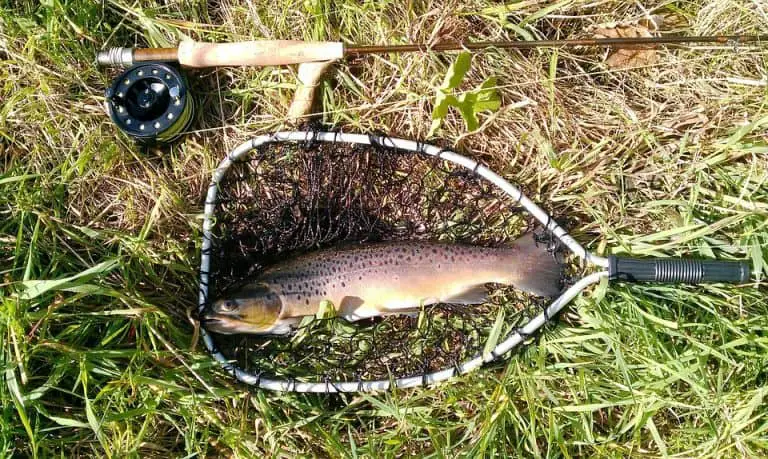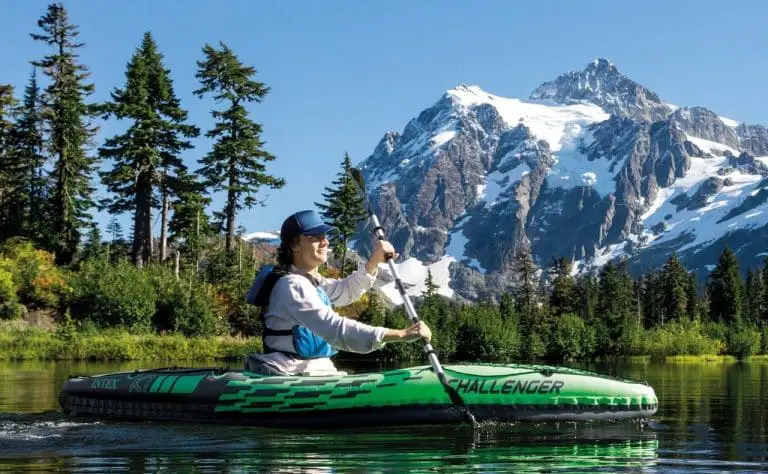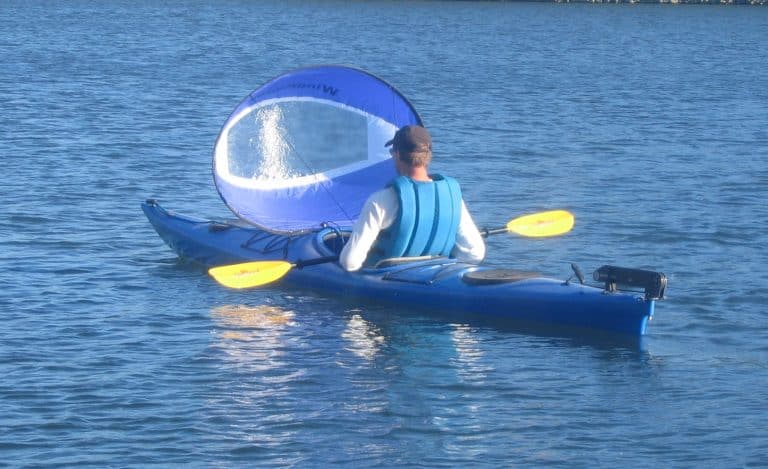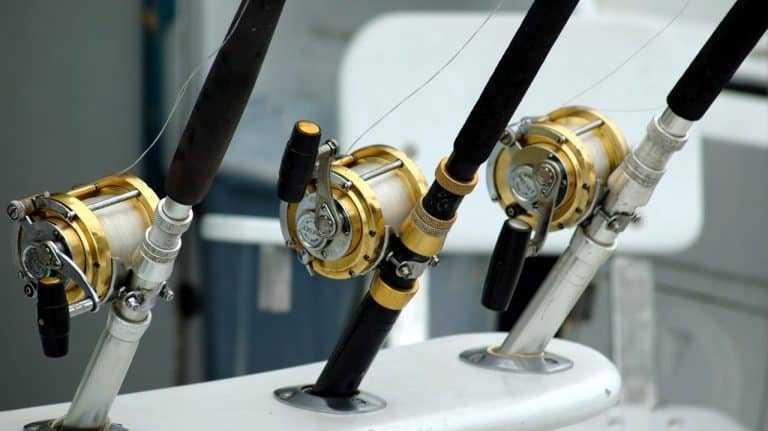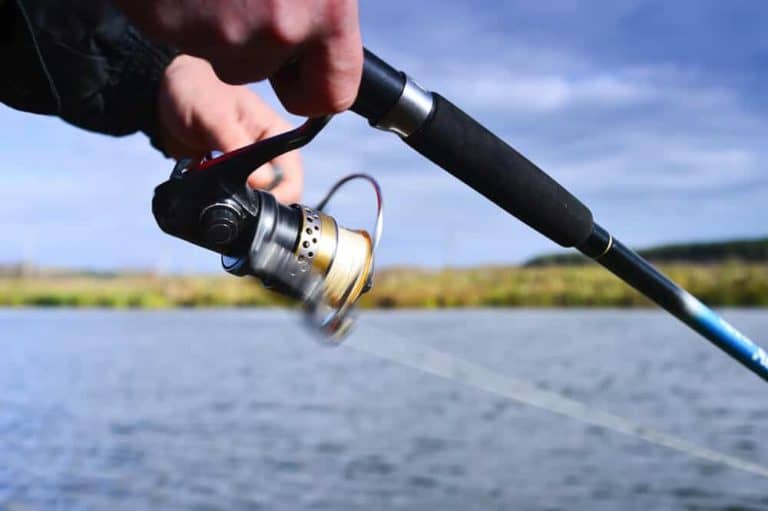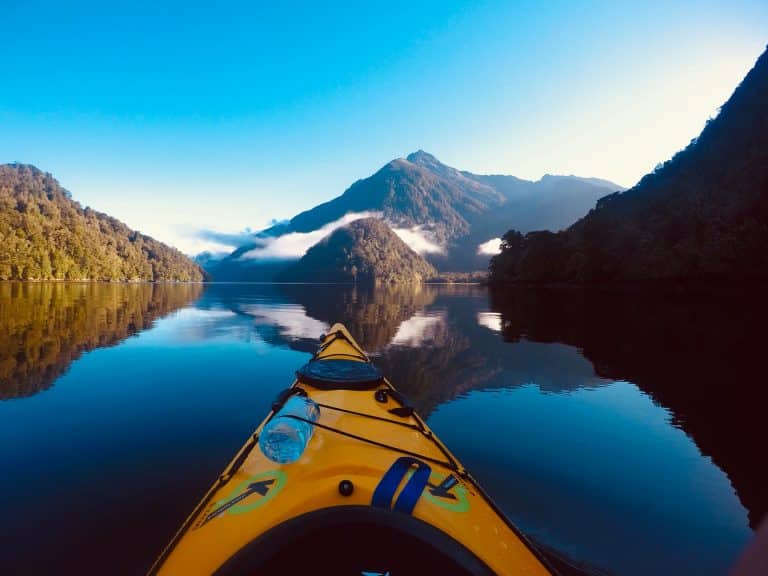10 Best Kayak GPS In 2025: Buyers Guide & Reviews
A kayak GPS is a small computer you take with you in your kayak to help direct and locate you as you travel.
The primary function is to stop you from getting lost, which can be a real problem if you’re in an unknown, remote area doing some exploring or on a multi-day trip.
A lot of the best kayak GPS systems have other functions, like telling you how far you’ve paddled and how many calories you’ve burnt, or where the fish are if you’re on a fishing trip in your kayak.
Because there are so many different kinds of Kayak GPS you can purchase and there is a lot on the market, we have summarised the 10 best GPS for kayaking below. Let’s dive right in!
10 Best Kayak GPS: Product Reviews
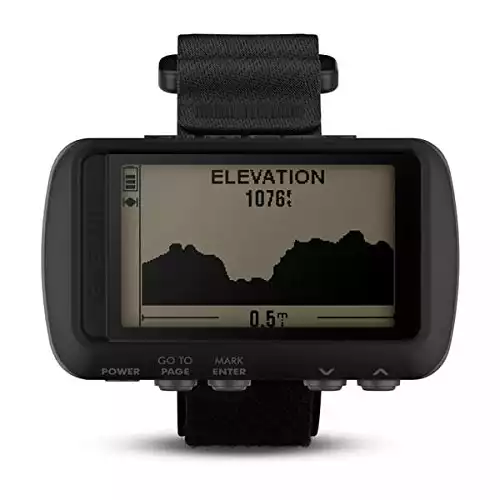 Garmin® Foretrex® 601 Wrist-mounted GPS Navigator with Smart Notifications
Garmin® Foretrex® 601 Wrist-mounted GPS Navigator with Smart Notifications
The Garmin Foretrex is for people who take their tech seriously. It’s made to military standards, and the screen is compatible with night vision goggles. If you’re a hardcore kayaker or adventurer, this might be the best option for you. It’s got GPS navigation and has an altimeter, barometer, and compass as well.
Key Features:
- Designed especially for kayakers, this unit fits onto your wrist like a watch. This means the data is quite literally close to hand, and it’s all waterproof so you don’t need to worry about splashes or even capsizing
- The battery will probably last longer than the kayaker! This can be used for 48 hours in full navigation mode, so you’ll be able to do multi-day trips without worrying about packing more batteries
- You can make this compatible with your smartphone, and get texts, emails, and calls diverted to the device. You can also share your location, which is ideal for group trips or solo expeditions in dangerous areas
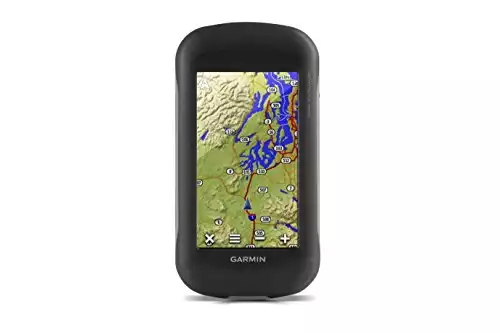 Garmin Montana 680t Handheld GPS With Pre-loaded TOPO Maps
Garmin Montana 680t Handheld GPS With Pre-loaded TOPO Maps
The Garmin Montana is great for people who do everything. This is great for kayaking, but can also be taken hiking, biking, or hunting. If you’re looking for a device that’s versatile, this is perfect. It’s also much more like a car GPS and can give you verbal directions so you don’t have to check the screen regularly.
Key Features:
- This works as a GPS and can navigate for the user, and it also includes an 8mp camera to document the wilderness.
- Supports GLONASS (the Russian satellite tracking system) and GPS so you’re always correctly located.
- The Garmin Montana has a four” touchscreen display, so it’s easy to use and isn’t covered in confusing buttons.
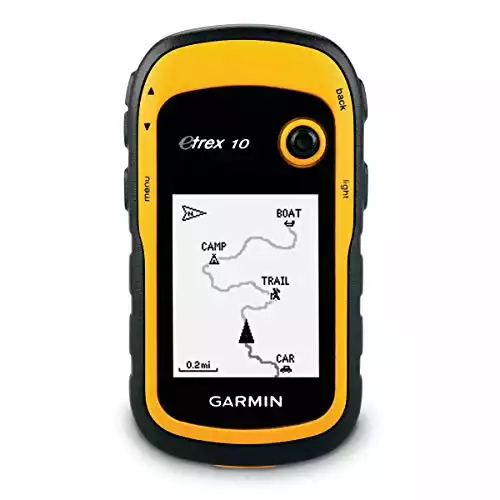 Garmin eTrex 10 Handheld GPS
Garmin eTrex 10 Handheld GPS
This is a great little device that will do exactly what you need. It’s not as flash as some of the other options, but it will work nicely with a kayak and it’s waterproof, and it's much more affordable than some of the other devices. It’s straightforward and compact and uses GLONASS and GPS together so you always have accurate data.
Key Features:
- The Garmin eTrex Handheld allows you to work with what you can see and figure out how long it will take to travel between different points
- It requires two AA batteries, which will last for 24 hours
- The display is customizable and you can also view an altimeter, compass, and other apps as you require
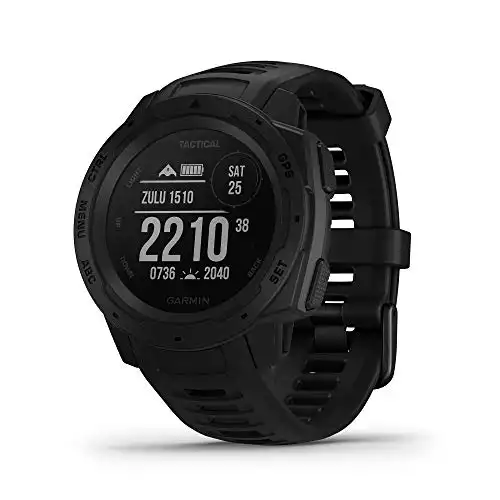 Garmin Instinct GPS Watch
Garmin Instinct GPS Watch
The Garmin Instinct is, essentially, a super watch. It gives you lots of information about your location and how your body is performing, and tracks and directs as required. It even tells the time! Additionally, because it fits easily onto a wrist it’s even better for kayakers, as you’ll only need to slightly adjust your arms to get all the information needed.
Key Features:
- The Garmin Instinct is tough. It’s compliant with USA’s military standards, and it’s water, temperature, and shock-resistant so there’s no need to worry about a little splash destroying everything.
- You can monitor your stress, heart rate, and activity levels and track them with the integrated profiles.
- It also monitors the local weather, so you can stay up to date on any potential issues.
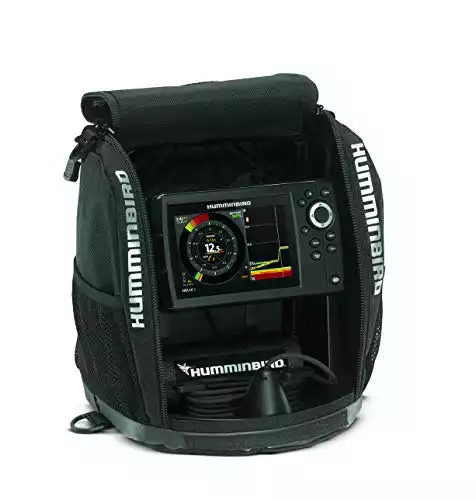 Humminbird HELIX 5 CHIRP DI GPS G2 Sonar & Fish Finder
Humminbird HELIX 5 CHIRP DI GPS G2 Sonar & Fish Finder
The Hummingbird is specially designed for anyone who wants to go fishing. There are some features that are great for any kayaker, like the map and GPS, but the primary focus is to help you locate and catch fish as easily as possible, using sonar to detect everything around your boat.
Key Features:
- Five” display with a backlight allows the user to see clearly, even in low light levels- perfect for anyone fishing at dawn or dusk!
- Users can adjust the maps and images from around the boat as they require, and there’s also a panel with information about the water’s depth, temperature, and the kayak’s location.
- Fishfinding features that allow the user to identify the type of fish in the water before casting.
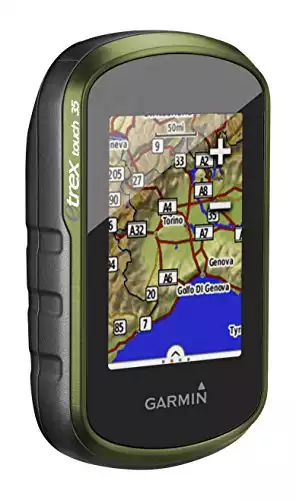 Garmin eTrex Touch 35 Handheld GPS
Garmin eTrex Touch 35 Handheld GPS
The Garmin eTrex Touch is pretty similar to the Garmin Montana, but it doesn’t have a camera or spoken navigation. However, it is waterproof! It can be used for a number of different activities, including kayaking, camping, and hiking, so it’s great for anyone who likes to go on triathlons or longer trips with new adventures every day. It can even be used in a car!
Key Features:
- The device is extremely tough and the display should still be easily visible despite dirt, humidity, dust, and water.
- Two AA batteries will last for 16 hours, so it should keep going all day and it won’t be difficult to take spares along just in case.
- The Garmin eTrex Touch can also be used with a smartphone, and texts, calls, and emails can be redirected to it to prevent you from being distracted by your phone.
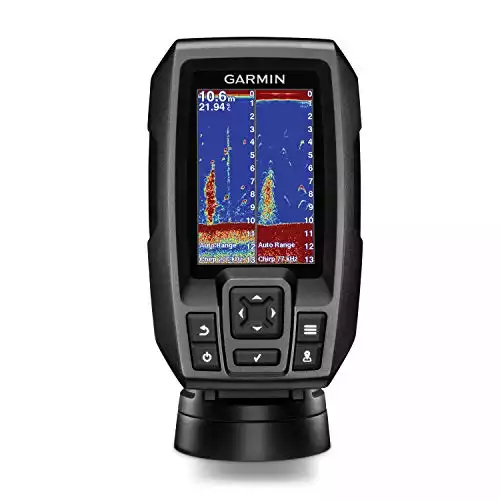 Garmin STRIKER Plus GPS Fish Finder with Transducer & Sonar
Garmin STRIKER Plus GPS Fish Finder with Transducer & Sonar
As the name suggests, the Garmin Striker is perfect for anyone who likes to combine kayaking and fishing. There’s a great mix of features that allow you to catch fish and identify and remember the best fishing spots. There are two different versions of this model, so there’s an option for a larger device if required. Even if you aren't kayak fishing, the device can still be mounted to the kayak and be used solely as a GPS.
Key Features:
- CHIRP (Compressed High-Intensity Radiated Pulse) sonar to help you gain a full understanding of the underwater environment and locate fish efficiently.
- The Garmin Striker is designed to be as tough and durable as possible so there aren’t any issues with it breaking or failing whilst it’s being used.
- There’s a fish ID system to help you know what you’re catching and avoid getting the wrong thing.
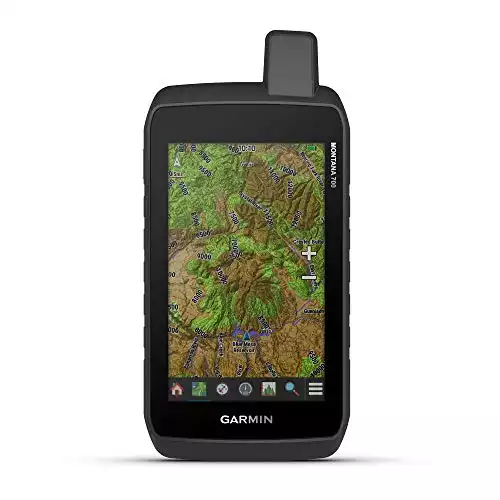 Garmin Montana 700 GPS Handheld Touchscreen Navigator
Garmin Montana 700 GPS Handheld Touchscreen Navigator
The Garmin Montana is another ‘all-rounder’ that will work with a kayak, bike, or if you just want to go for a hike. It’s got great maps that contain lots of information about the surroundings and can even warn you before you go into private land, to prevent accidental trespassing and stop users from getting lost. It does this by accessing information from GLONASS, GPS, and the Galileo satellite to get great coverage and accurate information.
Key Features:
- The battery life is great and will last 18 hours in GPS mode. The batteries are also rechargeable through the device with a USB connector, which means you won’t have to constantly buy new batteries.
- You can access up to date weather reports tailored to specific areas, which allows you to make and change plans as necessary.
- It’s compatible with technology from Alpha and Astero that tracks your dogs so they don’t get lost either, even if they runoff.
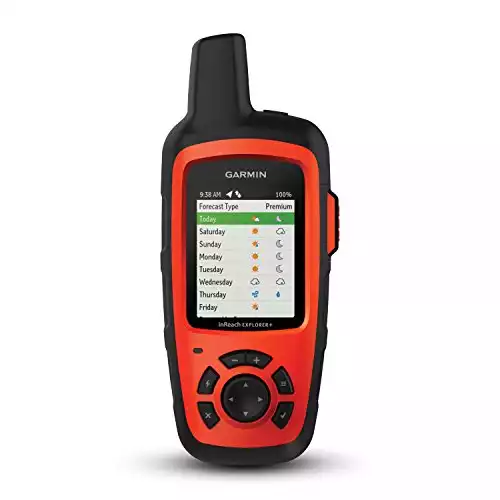 Garmin® inReach Explorer®+ Satellite Communicator with Maps
Garmin® inReach Explorer®+ Satellite Communicator with Maps
The Garmin inReach Explorer is a GPS navigation device, but it’s also good for communicating when you’re in a particularly remote or dangerous area. The device has all the usual features, like maps, compass, and navigation software and it allows the user to send texts, emails, and access social media, even when it’s out of normal signal range.
Key Features:
- There’s an easy to access SOS button on the side to help keep you safe and alert the necessary services if things go wrong.
- It’s water-resistant (rated IPX7) so you won’t need to worry about any splashes from your paddle.
- The battery will last for up to 100 hours of continuous use and update your location every ten minutes.
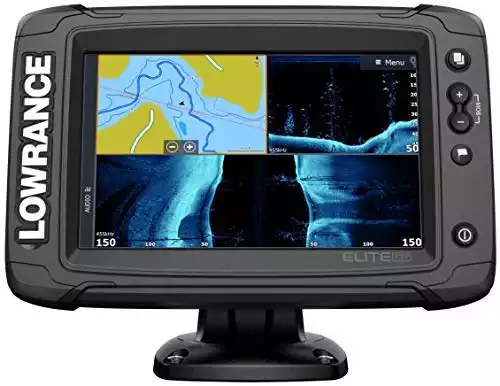 Lowrance Elite-7 Ti² US/Can Nav+ HDI Fish Finder
Lowrance Elite-7 Ti² US/Can Nav+ HDI Fish Finder
The Lowrance Elite-7 is a great option for anyone who likes to fish whilst kayaking. It has the standard maps and tracking information, and then also works as a fish finder and has lots of other features and applications to help you have the best possible fishing experience.
Key Features:
- All the GPS tracking and directions necessary and complete maps of the USA and Canada already loaded on.
- You can connect this with their smartphones to get all the notifications delivered easily without them having to take it out on the water too.
- Trademarked FishReveal technology allows you to find fish, even if they’re hiding, and correctly identify them.
Best Kayak GPS: Buyers Guide
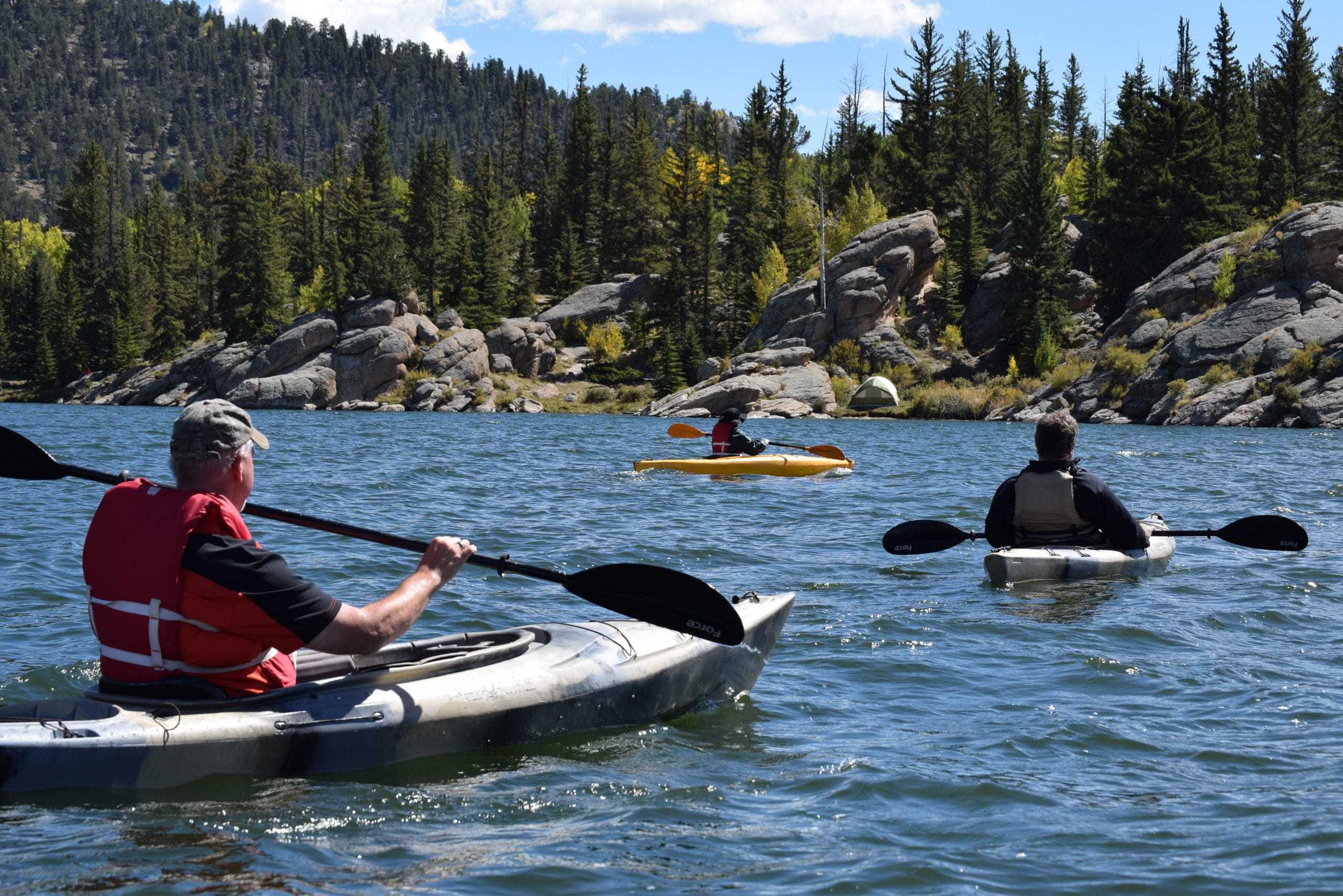
Wrist, Handheld or Built in Console?
There are three types of consoles: wrist, handheld, and built-in. As one would expect, the wrist console attaches to the wrist like a watch; a handheld console will need to be held in the hand (or stored in a pocket and then pulled out and checked) and a built-in console will attach to the kayak.
The wrist console is likely to be the best option for most kayakers: it’s easy to keep an eye on it, and you can check it regularly without any issue.
However, the handheld console might be a better option because the screens tend to be larger and they can show more information at once.
It also offers an opportunity for a break: pull the kayak to the bank, or just float if the water’s calm, and take some time to fully plot the direction and check anything else.
Finally, the built-in console is the easiest to peek at and can be monitored closely. It requires some form of mounting to keep it onto the boat- the type will depend on the kind chosen. The right kind of console will depend on the kayaker and the type of kayaking in question.
Waterproof Rating
There are several different methods of measuring how waterproof or water-resistant a product is.
The one most commonly used with kayak GPS’s is the IP rating, and the products are categorized as either an IPX7 or an IP67.
IPX7 means that the device can fall into water up to one meter deep and still work fine (hopefully this will give the user enough time to grab it!) and IPX6’s are waterproof to one meter deep, and they can stay in the water for 30 minutes and still work when they come out.
Both IPX6 and IP67s should not malfunction if they get slightly splashed, which will definitely happen at some point!
Some manufacturers will also add the depth to which the device is waterproof, but it won’t need to be especially deep if you’re only going kayaking.
What does WAAS mean?
WASS stands for Wide Area Augmentation System. It’s used by the US Federal Aviation Administration to work alongside GPS and make it more reliable and precise.
The technology was good, and it became popular outside of the military with devices such as kayak GPS systems.
The WAAS uses ground-based tracking systems to give GPS more information and create more accurate readings.
This means that the GPS can give better instructions, so you are less likely to get lost. However, this is not available everywhere, so do check first.
GPS Maps
All kayak GPS devices should be equipped with a world base map.
Most will also offer downloadable/downloaded maps of specific areas that offer more detail and allow the user to plot a specific course through the water, called a ‘blue map’.
Occasionally they’ll offer some additional storage on a microSD card. It’s also possible to get devices that use satellite images to project the correct area, so users can get up to date information and don’t need to worry about downloading the right maps or leaving the area accidentally and being left with no information.
This is usually available with a subscription, so make sure to check it out before purchasing a kayak GPS.
Display Size
The size of the display will depend on your preference and the type of console.
Typically, wrist devices will be the smallest, and consoles will be the largest. Larger devices are better for showing more information at once and are good if your eyesight isn’t great.
Don’t be put off by a small device: you can easily adjust to switching between maps and applications, and smaller devices are easier to have on hand and won’t get in the way.
It’s important to find something that shows all the relevant information but isn’t too big and cumbersome.
Best Kayaking GPS: FAQs
Are kayaking GPS’s accurate?
They should be! Most kayaking navigation systems use GPS and GLONASS to make sure that they’re keeping a close track of the user’s location, even at high altitudes. Some systems also use WAAS, which allows them to be more accurate. If you’re looking to buy a Kayaking GPS device, make sure that you check the information specific to that product.
Can I just use my phone?
No! There’s really no need to take your phone with you, especially because many kayak GPS systems can also receive your calls, texts and emails.
Using phone maps is a bad idea for two reasons: firstly, they’re not usually accurate or good quality at the best of times, and going into the wilderness with a patchy signal is going to make things worse.
Secondly, phones also aren’t usually waterproof, but kayak GPS devices are.
Will a Kayak GPS replace my compass and map?
Not entirely. We use and trust these GPS devices, but it’s always a good idea to have a back-up in case of emergency, especially if you’re going to be alone or traveling somewhere really remote. You’ll also need to have some idea of how maps work to use GPS, so the skills won’t be completely lost.
How can you attach or mount a kayak GPS?
This really depends on your kayak and the GPS in question. For most kayaks, the GPS will attach at the front of the cockpit so it’s in the eye-line of the paddler and is easy to reach, but it’s not physically in the way. Some GPS consoles will come with a mounting kit.
Where should I keep my GPS whilst kayaking?
Wherever you feel most comfortable! If it’s a wrist GPS, then store it there. If it’s mounted it’ll probably fit at the front of the cockpit, and handheld GPSs are best kept in pockets and then taken out when you need to check the location. Try to make sure it’s easy to get to without moving too much in your seat.
Do some Kayak GPS include a fish finder and why?
Some kayak GPS’s do have fish finders! It’s a useful combination of two devices, and it means that users can reduce the amount of gear they have to take and pay attention to.
Obviously, this is only really useful for kayakers who want to go fishing, but the technology is included in many devices and you don’t have to use it if you don’t want to.
Best GPS For Kayaking: Conclusion
And that wraps it up! The team at Watersportingadventure.com hopes that this article has helped you find the best kayak GPS for your next adventure.
Remember to always check out the buyer’s guide so you fully understand which key features you should be looking out for when choosing the best GPS for kayaking.
Related Posts:
- Kayak Rudder Kits: Top Picks & How-To Install
- How To Store A Kayak In A Garage – Different Options
- Best Kayak Trolling Motors: 5 Reviews & Buyers Guide (2023)
- Kayak Truck Racks – Best Options & Buyers Guide
- Best Kayak Fishing Crates For Easy Kayak Storage
- What Is A Scupper Plug & Do You Need Them In Your Kayak?
- Paddle Board VS Kayak – Which Is Best For You?
- Best Kayak Cooler For Ice Cold Storage In 2023
- Best Kayak Carts, Wheels & Trolleys You Should Use In 2025
- Intex Challenger K1 Review – Inflatable Kayak Guides

